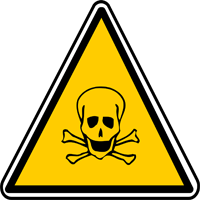Severe lactic acidosis from acute cyanide poisoning after intentional amygdalin ingestion in a teenager

Submitted: 26 March 2020
Accepted: 22 August 2020
Published: 23 December 2020
Accepted: 22 August 2020
Abstract Views: 641
PDF: 297
Publisher's note
All claims expressed in this article are solely those of the authors and do not necessarily represent those of their affiliated organizations, or those of the publisher, the editors and the reviewers. Any product that may be evaluated in this article or claim that may be made by its manufacturer is not guaranteed or endorsed by the publisher.
All claims expressed in this article are solely those of the authors and do not necessarily represent those of their affiliated organizations, or those of the publisher, the editors and the reviewers. Any product that may be evaluated in this article or claim that may be made by its manufacturer is not guaranteed or endorsed by the publisher.

 https://doi.org/10.4081/ecj.2020.8985
https://doi.org/10.4081/ecj.2020.8985








